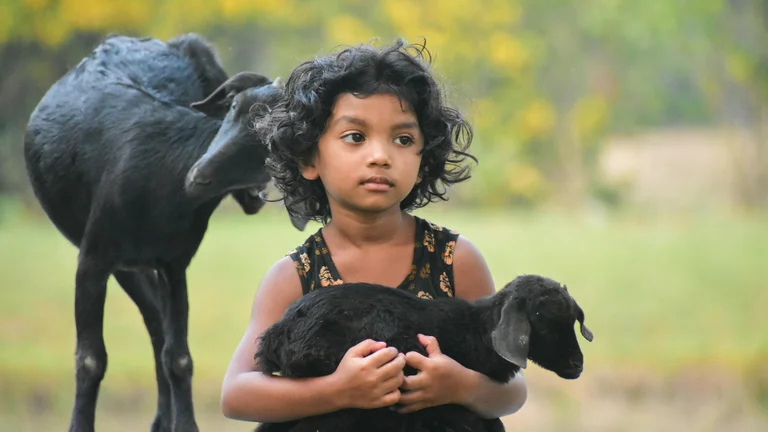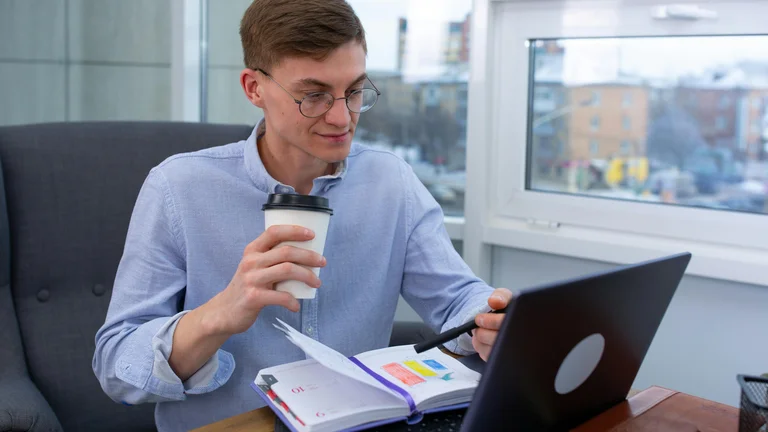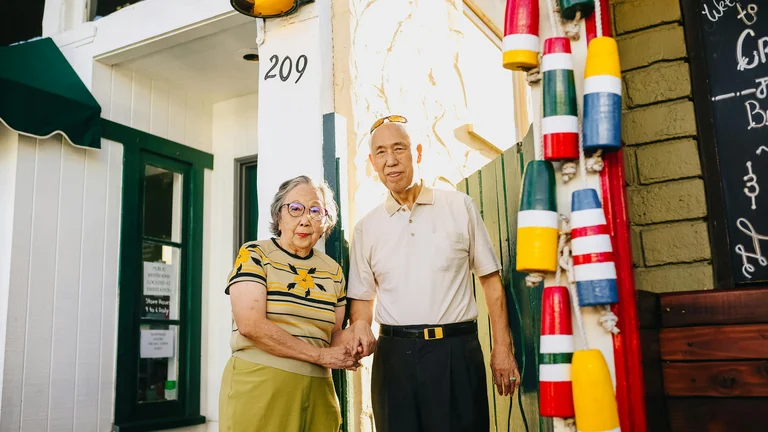
In the expansive world of Korean dramas (K-Dramas), the 'best friends to lovers' storyline stands out as a beloved narrative arc that captivates audiences globally. This storyline thrives on the deep emotional foundation laid by long-standing friendships, transforming them into romantic bonds that feel both authentic and compelling. The subtlety of evolving feelings, intertwined with the characters' shared history, creates a rich tapestry of emotions that resonates profoundly with viewers. In this comprehensive exposition, every facet of 'best friends to lovers' storylines in K-Dramas is meticulously examined, offering detailed insight into the thematic elements, character development, cultural context, and narrative structures that make these stories so enduringly successful. The analysis further includes practical examples, comparisons, and narrative techniques, supporting a nuanced understanding of why this trope is integral to K-Drama storytelling and how it is executed with precision.
To begin, the 'best friends to lovers' trope in Korean dramas typically involves two characters who have built a strong platonic relationship over an extended period. They share daily experiences, secrets, and support through life's ups and downs, establishing a foundation of trust and familiarity that serves as fertile ground for romantic feelings to eventually emerge. This transition from friendship to romance is rarely instantaneous or overt; instead, it unfolds gradually, often marked by moments of realization, hesitation, and vulnerability. The tension inherent in risking a beloved friendship for love injects emotional complexity into the storyline, creating compelling conflicts and engaging character arcs.
Central to the appeal of this trope is the deep emotional realism it offers. Unlike love-at-first-sight plots, the 'best friends to lovers' storyline unpacks the slow-burning evolution of love, portraying it as a natural extension of companionship, shared values, and mutual understanding. The characters’ histories enrich their interactions, allowing subtle gestures, inside jokes, and unspoken feelings to carry significant weight. This layered storytelling produces empathy and investment, as audiences often relate to the bittersweet nature of realizing feelings for someone who has always been 'just a friend.'
A detailed examination of key K-Dramas employing this trope reveals the diverse narrative strategies and thematic nuances that drive the storyline. For instance, the drama "Because This Is My First Life" showcases protagonists whose friendship provides them the space to challenge societal expectations around relationships while gradually recognizing their unique compatibility. Similarly, "My Mister" presents a deeper, poignant take on human connection evolving beyond initial platonic bounds into healing love. These dramas often juxtapose personal growth, social obstacles, and emotional vulnerability, offering rich character studies that elevate the 'best friends to lovers' narrative beyond cliché romance.
To fully appreciate the mechanics of best friends to lovers storylines, it is essential to understand the integral role played by character development. Typically, both protagonists undergo transformative arcs that focus on self-awareness, emotional maturity, and redefinition of identity in relation to one another. Their friendship usually begins with a balance of power and dynamics, which subtly shifts as romantic feelings emerge, necessitating negotiation and reconfiguration of boundaries. This evolution is portrayed through layered dialogues, body language, and intimate moments that reflect shifting perceptions and internal conflicts.
In many K-Dramas, the transition from friendship to love is catalyzed by specific triggering events. These events can range from life-changing crises, unexpected revelations, instances of jealousy invoking realization of true feelings, or even external romantic interests highlighting the protagonists’ special bond. These plot devices serve not only to advance the storyline but also to deepen the emotional stakes, prompting characters and audiences alike to confront the fragility and value of their relationships. This pattern reinforces the universality of the experience, as viewers recognize these moments in their own interpersonal lives.
The cultural context embedded in Korean society notably informs the thematic resonance of best friends to lovers storylines. Traditional values emphasizing loyalty, respect, and social harmony often shape characters’ hesitations and rhetorical expressions of love. The impact of Confucian cultural elements, especially regarding friendship and relationships, often surfaces in nuanced ways—respect for boundaries, fear of disrupting group dynamics, or concern for societal perception. These layered social dynamics add complexity and authenticity, presenting love not as impulsive passion but as a responsibility intertwined with social roles.
Moreover, gender roles and expectations within Korean culture influence how friendships and their transitions to romance are depicted. Male and female characters frequently navigate societal pressures differently, reflecting subtle gender-specific challenges in expressing vulnerability or asserting romantic interest. This dimension adds richness and realism to the narrative, as characters confront both internal desires and external norms. The storytelling carefully balances these cultural factors with individual psychology to portray believable and relatable transformations.
From a narrative structure perspective, the pacing of best friends to lovers storylines is crucial to their success. These arcs typically span multiple episodes, allowing gradual yet consistent development. The slow-burn format capitalizes on anticipation, building tension incrementally through misunderstandings, near-confessions, and moments of intimacy that remain unspoken or ambiguous. This deliberate pacing reflects real-life emotional complexity, underscoring that love evolving from deep friendship demands time, courage, and self-reflection.
Below is an illustrative table outlining the critical phases commonly observed in best friends to lovers arcs, highlighting key narrative beats and their thematic significance:
| Phase | Description | Thematic Focus | Typical Narrative Device |
|---|---|---|---|
| Establishment of Friendship | Introduction of characters as close confidants with shared history. | Trust, Familiarity | Flashbacks, casual interaction scenes |
| Subtle Emotional Shifts | Emerging feelings begin to surface through small gestures. | Confusion, Awakening | Internal monologues, meaningful eye contact |
| Triggering Event | External or internal catalyst disrupts equilibrium. | Conflict, Realization | Jealousy arc, confession near-misses |
| Confrontation and Vulnerability | Characters confront changed feelings or misunderstandings. | Courage, Fear of Losing Friendship | Heartfelt dialogues, emotional scenes |
| Transition | Acceptance of love and redefining relationship. | Commitment, New Beginnings | Mutual understanding, symbolic gestures |
Understanding these phases helps in appreciating how writers craft emotionally resonant narratives that avoid rushed or forced transitions. This also explains audience investment, as viewers identify the subtle emotional shifts and eagerly anticipate resolution.
One of the remarkable qualities of best friends to lovers storylines in K-Dramas lies in their character chemistry. The dynamic between the leads thrives on a balance of comfort and tension. Friends share ease of communication and deep familiarity, yet when love enters the equation, communication becomes layered with new meanings and unspoken questions. The chemistry often manifests in non-verbal cues — lingering looks, sudden silences, hesitations — that speak volumes beyond scripted dialogue. The ability of actors to convey these subtleties significantly enhances narrative immersion and emotional impact.
Actors often receive critical acclaim for their nuanced portrayal of this evolution, given the challenge of maintaining authentic friendship warmth while subtly infusing growing romantic tension. For example, the chemistry between Park Seo-joon and Kim Ji-won in "Fight For My Way" epitomizes how restrained interactions and shared moments of vulnerability produce convincing best friends to lovers arcs that avoid melodrama yet remain deeply moving. Similarly, the natural rapport observed in "While You Were Sleeping" between Lee Jong-suk and Bae Suzy illustrates effortless transitions from camaraderie to romantic involvement.
Exploring the thematic depth, best friends to lovers stories often delve into concepts of trust, timing, and the metaphysical boundaries between friendship and romance. They question whether romantic love is an extension or a departure from friendship. These narratives explore emotional risk — will romantic love enhance or harm the friendship? Can intimacy survive redefinition? The characters’ navigation through these themes often mirrors broader human questions about connection and vulnerability.
The social ramifications within the storylines also add gravity. The impending possibility of losing a steadfast companion by pursuing romantic feelings injects tension uncommon in typical romances. This fear creates conflict internally and externally, as characters weigh personal desires against the preservation of important social bonds. In many K-Dramas, this dilemma becomes a crucible for character growth and authenticity, revealing strengths and weaknesses.
Another significant element involves the supporting characters and secondary plotlines that complement best friends to lovers arcs. These characters often provide contrast, advice, or alternative viewpoints, enriching the narrative tapestry. For example, a secondary character might represent impulsive romantic love, serving as foil to the leads’ introspective slow burn. This diversity of perspectives underscores the complexity of human relationships and broadens the thematic exploration.
It is equally important to highlight how setting and context impact the story. Urban environments often frame a fast-paced interaction, where moments are stolen amidst hectic lives, intensifying the treasure of shared time. Conversely, rural or school settings may emphasize innocence, nostalgia, and continuity, reinforcing themes of longstanding bonds and gradual realization. These environmental factors subtly influence character behavior and plot progression.
To provide further clarity, here is a list summarizing key features that define the best friends to lovers trope in K-Dramas:
- Longstanding platonic relationship with strong emotional foundation.
- Gradual emotional awakening marked by subtle cues.
- Triggering events that highlight underlying romantic feelings.
- Internal conflict about risking friendship for love.
- Incremental character growth in emotional maturity.
- Reliance on non-verbal communication and shared history.
- Reflection of cultural values influencing expressions of love.
- Balance of tension and comfort in on-screen chemistry.
- Use of supporting characters to create narrative contrast.
- Setting's influence on tone and pacing.
Understanding these elements enables both creators and viewers to appreciate the complexity and emotional resonance inherent in this storyline. The trope's effectiveness stems from its capacity to portray love as an evolution rather than sudden transformation, reflecting the intricacies of human bonds.
From the perspective of screenwriting, crafting a best friends to lovers narrative demands careful attention to dialogue, pacing, and character consistency. Writers must create believable character motivations for hesitating or delaying romantic confession, ensuring the tension feels earned rather than contrived. Balancing moments of levity and intensity keeps the audience engaged without tipping into melodrama. Moreover, the buildup must maintain momentum; prolonged ambiguity risks frustrating viewers, while premature resolution diminishes emotional payoff.
Dialogue plays a pivotal role in articulating the protagonists' internal dilemmas without overt exposition. Often, conversations are layered with indirect references, innuendos, or double meanings that hint at deeper feelings. These interactions encourage viewer interpretation and investment, fostering a participatory experience. Screenwriters strategically place these subtle exchanges at critical narrative junctions to heighten emotional impact.
Character consistency throughout the arc ensures that the protagonists’ behaviors align with established personalities while allowing credible growth. For instance, a shy, reserved character may gradually gain confidence in expressing affection, supported by the comforting presence of the friend-turned-love interest. Maintaining these nuances preserves narrative integrity and emotional authenticity.
Below is a comparative table highlighting distinct narrative approaches taken by some notable K-Dramas featuring best friends to lovers storylines, illustrating the variety within the trope:
| Drama Title | Plot Focus | Character Dynamics | Conflict Type | Resolution Style |
|---|---|---|---|---|
| Because This Is My First Life | Unconventional marriage and life choices. | Friends who become life partners through mutual understanding. | Social expectations vs. personal desires. | Gradual mutual acceptance with realistic compromises. |
| Fight For My Way | Overcoming personal and professional obstacles. | Longtime friends revealing romantic feelings amid struggles. | Fear of ruining friendship, external career pressure. | Open confession followed by renewed commitment. |
| My Mister | Emotional healing through human connection. | Platonic strength evolves into subtle, mature love. | Personal trauma and social stigma. | Subtle acceptance and slow progression. |
| While You Were Sleeping | Fate, dreams, and crime investigation. | Childhood friends sharing secrets develop feelings. | Timing issues and external danger. | Explicit confessions culminating in mutual trust. |
This table elucidates how the same foundational trope adapts to different thematic concerns, settings, and character archetypes, demonstrating the flexibility and enduring relevance of best friends to lovers narratives.
From a viewer engagement perspective, audiences are drawn to this storyline because it offers more than typical romance. It promises a sense of realism and emotional depth. The gradual change conveys that love can emerge naturally without losing the comfort of existing friendship. This satisfies a desire for relationships rooted in mutual respect, shared history, and emotional safety. Such stories often inspire reflection on personal relationships, fostering identification and emotional catharsis.
Moreover, the dramatic tension created by the uncertainty of the characters’ emotional states keeps viewers invested over time. Scenes that seemingly confirm or deny romantic feelings generate speculation and discussion, often propagating fan theories and active online communities around particular dramas. This interaction further enhances the impact and longevity of the best friends to lovers trope within K-Drama fandoms.
To support aspiring creators and scriptwriters who wish to incorporate this storyline, here is a step-by-step guide outlining the essential components for crafting a compelling best friends to lovers arc:
- Define the Foundation: Establish a credible and strong friendship with clear history and mutual affection that feels natural.
- Introduce Emotional Subtlety: Layer scenes with nuanced gestures, indirect dialogue, and internal conflict signaling emerging romantic feelings.
- Develop a Trigger Event: Create a believable incident that disrupts status quo and brings underlying feelings into focus for characters and audience.
- Explore Internal Conflict: Portray characters wrestling with risks of changing relationship dynamics, fears of loss, and social consequences.
- Use Supporting Cast Wisely: Employ secondary characters and subplots to mirror, contrast or intensify emotional stakes.
- Build Dramatic Tension Gradually: Pace revelations and confessions to maximize anticipation without frustrating viewers.
- Craft Authentic Resolution: Render transitions believable by maintaining character consistency and providing emotional payoff.
- Emphasize Non-Verbal Communication: Use visual storytelling elements such as lingering looks, body language, and quiet moments for depth.
- Integrate Cultural Nuance: Reflect societal norms and values influencing relationship dynamics to add realism and resonance.
- Conclude with Growth: Demonstrate how the relationship enhances individual and shared emotional maturity.
Beyond narrative mechanics, the 'best friends to lovers' storylines reflect broader human experiences relating to trust, patience, and courage in love. K-Dramas utilize this trope not merely for romance but as a vehicle to explore profound interpersonal evolution. In doing so, they provide audiences with stories that are emotionally satisfying yet intellectually engaging, presenting love as a continuum rather than a sudden occurrence.
Statistical insights into K-Drama viewer preferences reinforce the popularity of friendship-to-romance arcs. According to surveys by Korean entertainment analysts, approximately 65% of drama viewers cite best friends to lovers as one of their favorite romance tropes due to its relatability and emotional depth. This preference is heightened among audiences aged 20-35, who value nuanced character development and realistic portrayals over conventional romantic clichés.
This appeal also manifests in social media trends, where hashtags related to best friends to lovers K-Dramas regularly trend during show broadcasts, demonstrating engaged fan bases and conversation around character relationships. The trope influences not only narrative construction but also marketing strategies, with teasers often hinting at the slow emotional progression between leads to create excitement and attract viewership.
Examined through a psychological lens, the storyline resonates because it taps into the safety of attachment theory, where friendship provides secure bonding essential for trust development. When romance emerges within such a framework, it aligns with human attachment needs—predictability, acceptance, and emotional security. This creates a psychologically satisfying narrative for audiences seeking meaningful emotional connections depicted on screen.
From a production standpoint, best friends to lovers stories challenge directors and writers to balance subtlety and engagement. Visual cues, prompt editing, and script nuances work collaboratively to signal emotional shifts. Directors often use close-up shots to capture unspoken glances, while soundtracks underscore emotional tones sympathetically without overwhelming the scene. These cinematic techniques enhance viewer immersion and reinforce narrative themes.
In summary, best friends to lovers storylines occupy a central position in K-Dramas, weaving rich emotional tapestries through character-driven narratives, cultural relevance, and psychological resonance. Their sustained popularity reflects the universal human experience of evolving affections cultivated through time, trust, and shared life journeys. The detailed breakdown herein offers an extensive framework for understanding and appreciating this compelling narrative arc in the realm of Korean dramas.
FAQ - Best Friends to Lovers Storylines in K-Dramas
What makes best friends to lovers storylines popular in K-Dramas?
They portray a natural evolution of love grounded in trust and familiarity, offering emotional depth and relatability that resonates with viewers.
How do K-Dramas typically transition characters from friendship to romance?
Through gradual emotional shifts, triggering events like jealousy or crises, and moments of vulnerability, leading to confessions and relationship redefinition.
Are cultural factors important in these storylines?
Yes, Korean cultural values around respect, loyalty, and social harmony shape character interactions and the pacing of romantic developments.
What kind of challenges do characters face in these storylines?
They often struggle with fear of losing friendship, societal expectations, internal conflicts, and navigating changing emotional boundaries.
Can best friends to lovers storylines be found in all types of K-Dramas?
While common in romantic dramas, variations appear across genres including slice-of-life, coming-of-age, and melodramas, adapting to diverse narrative contexts.
Best friends to lovers storylines in K-Dramas expertly depict the gradual evolution of deep friendships into romantic relationships, grounded in emotional realism and cultural nuance. These arcs engage audiences by portraying love as a natural extension of trust and shared history, making them a favorite and enduring trope within Korean drama narratives.
The best friends to lovers trope remains a cornerstone of K-Drama storytelling due to its nuanced portrayal of evolving human emotions and relationships. Its blend of deep friendship, gradual romantic awakening, and cultural authenticity creates stories that engage viewers both emotionally and intellectually. By examining its narrative structure, character dynamics, and thematic richness, we recognize its enduring appeal and relevance in contemporary Korean drama.






